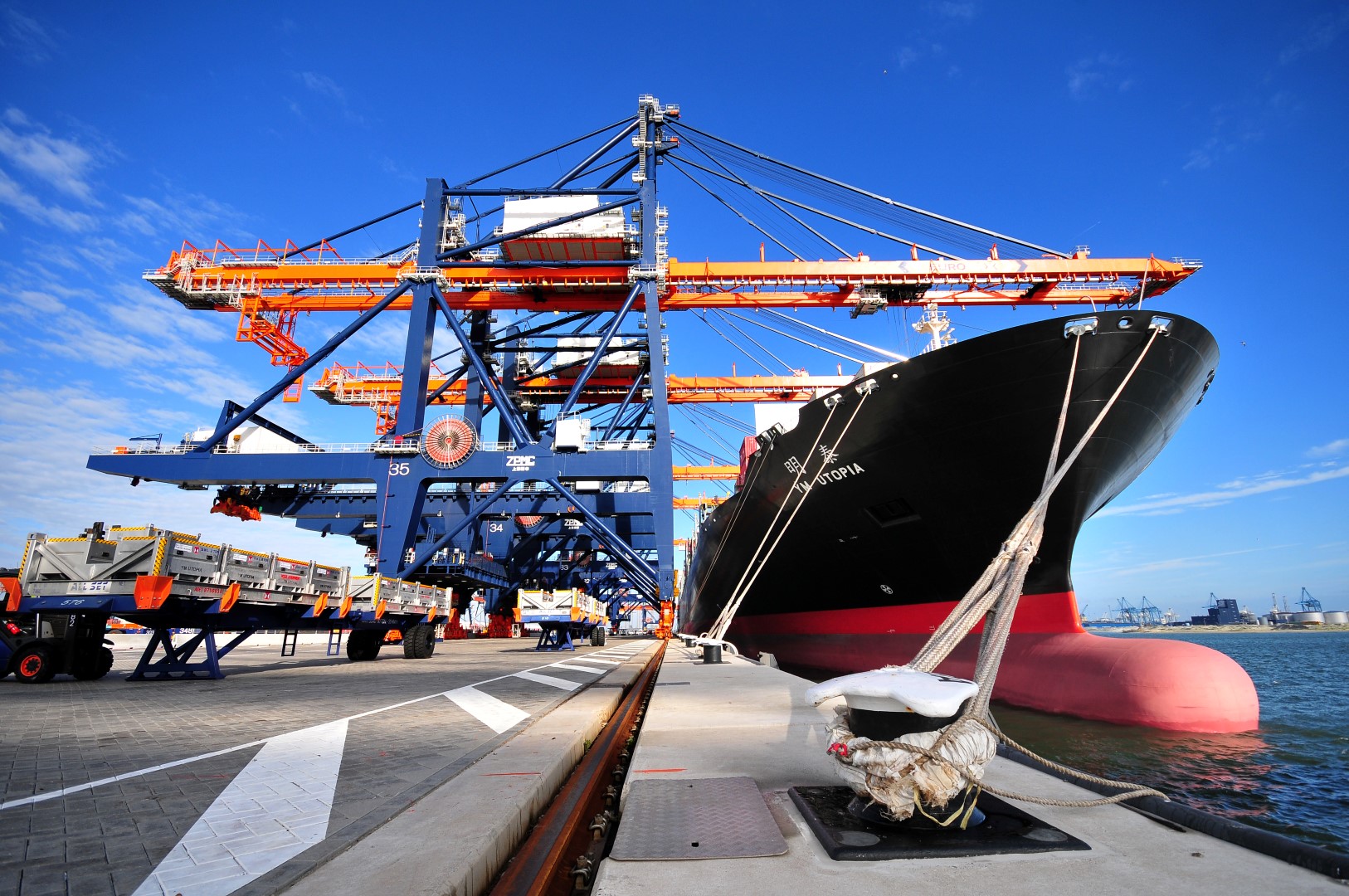Terminal simulation analysis
Terminal simulation helps operators of new container terminals, or those who wish to expand or retrofit their current container terminal facilities, or those who wish to optimize their current container terminal operations, because they often need to make decisions on high investments for situations with many unknowns and uncertainties. Portwise aims to mitigate risks that relate to these uncertain factors in its container terminal design projects.
For this purpose, Portwise has developed simulation model libraries. The models are tailored for different purposes: models with a longer modeling horizon to validate the quay length, number of berths and service levels for different vessel types; and models with a shorter modeling horizon that mimic
the operations to a much greater level of detail and contain both the movements of containers and equipment as well as a detailed representation of the Terminal Operating System (TOS) and equipment control systems.
The first, long time-horizon, type of model answers questions like:
What quay lengths and terminal depths are needed to facilitate different container volume growth scenarios?
How do vessel waiting times vary with berth length, prioritization decisions and available access channels?
How many quay cranes are required to handle (an increase in) the quay volume?
What are the average and peak container volumes in storage?
What are the required hourly transport and stack handling capacities?
Similar questions can be answered with the corresponding train handling model, or with the bulk handling model.

The second, detailed and extremely accurate, type of model provides insights in:
What performances can be expected for different terminal layouts or handling systems?
How many prime movers are required to meet the performance targets?
How many stack modules of RTGs, RMGs or other are needed and of which dimensions?
What performance improvements can be realised by changing equipment specifications or control algorithms?
Can a certain yard design (layout, nr of equipment, planning and control rules) accommodate the required service levels over a longer period?

Portwise brings over 20 years of experience in terminal simulation analysis
We have a loyal team of dedicated simulation analysts who work and maintain Portwise’ inhouse simulation libraries. The high complexity of ports and warehouses is represented in the details of the simulation models. Our expert developers are highly skilled to create accurate models for each design project efficiently. Backed by high-end IT systems, our team ensures our models are stored securely and available for future purposes
A great example of an outcome of terminal simulation can be found on our YouTube channel: Conversion of the Port of Virginia to semi-automated terminals.
The value Portwise delivers:
- Quantitative insight in logistic systems with many uncertainties and dependencies.
- Detailed simulation analysis for container and bulk operations.
- Different levels of detail for specific purposes.
- Tailored simulation models for special terminal or other logistic operations
- Prove of concept for new types of equipment or new handling strategies.
What makes Portwise different?
- Simulation models validated against data from live operations.
- Dedicated team of modeling experts with long track record.
- Library of models covering all modes of terminal operations.
- State-of-the-art tools to analyse and interpret simulation results, and translate these into useful insights.